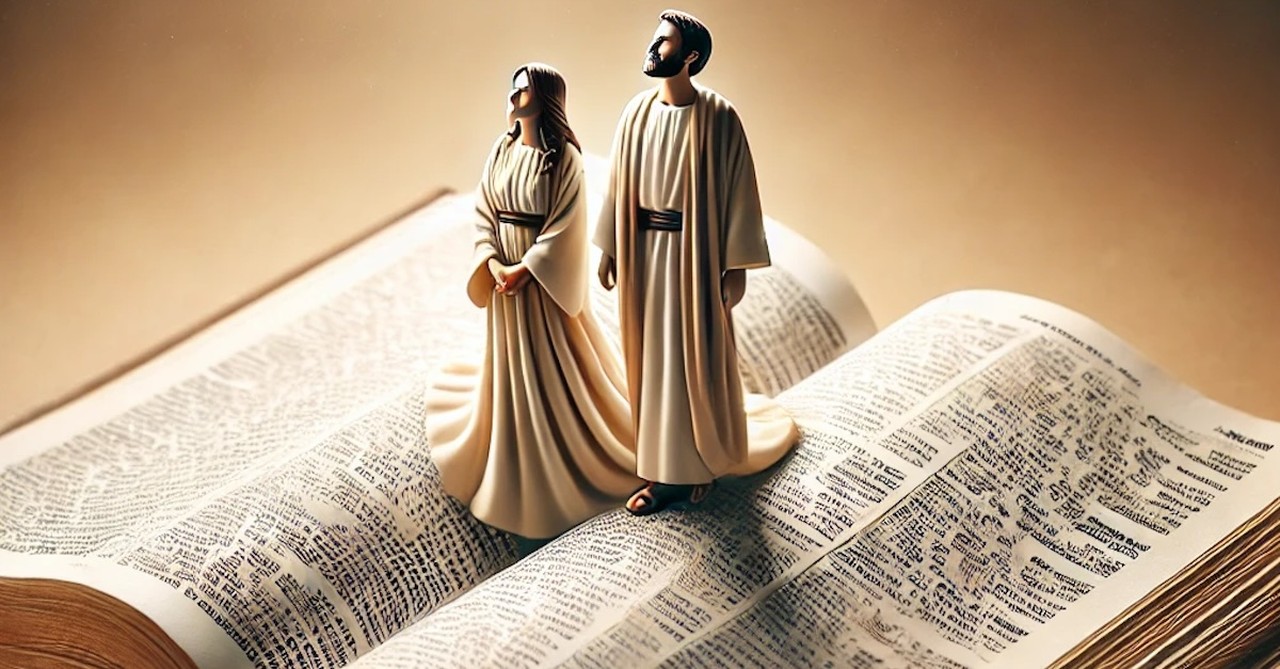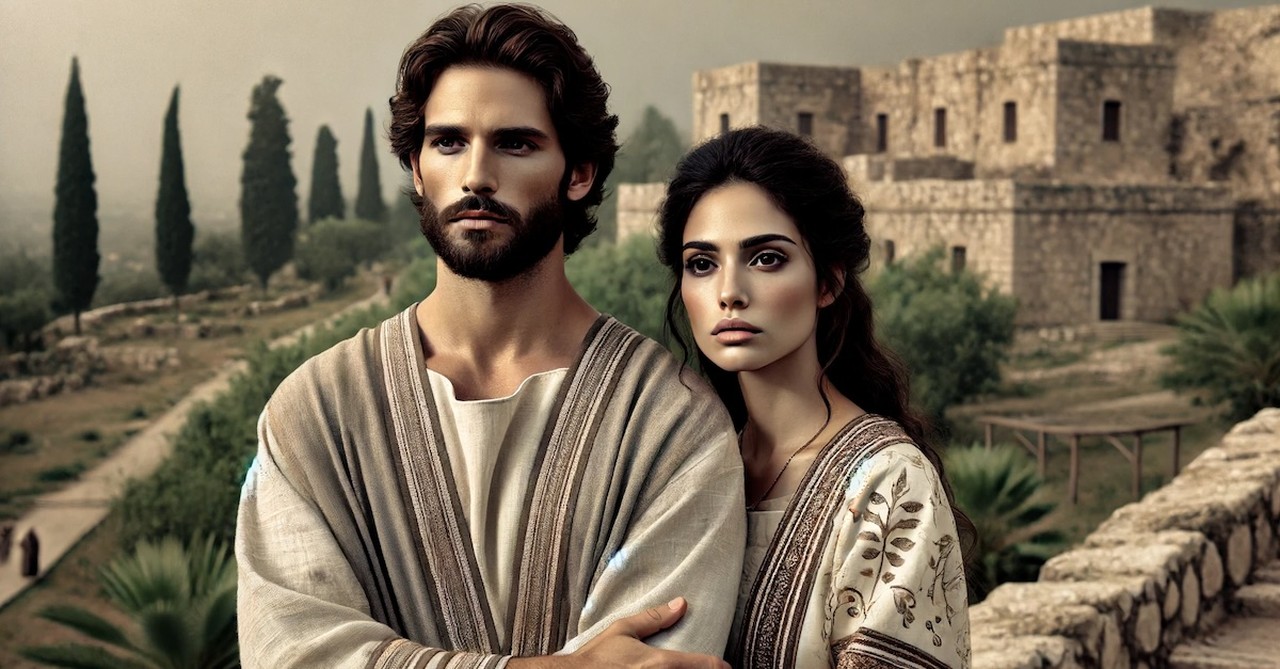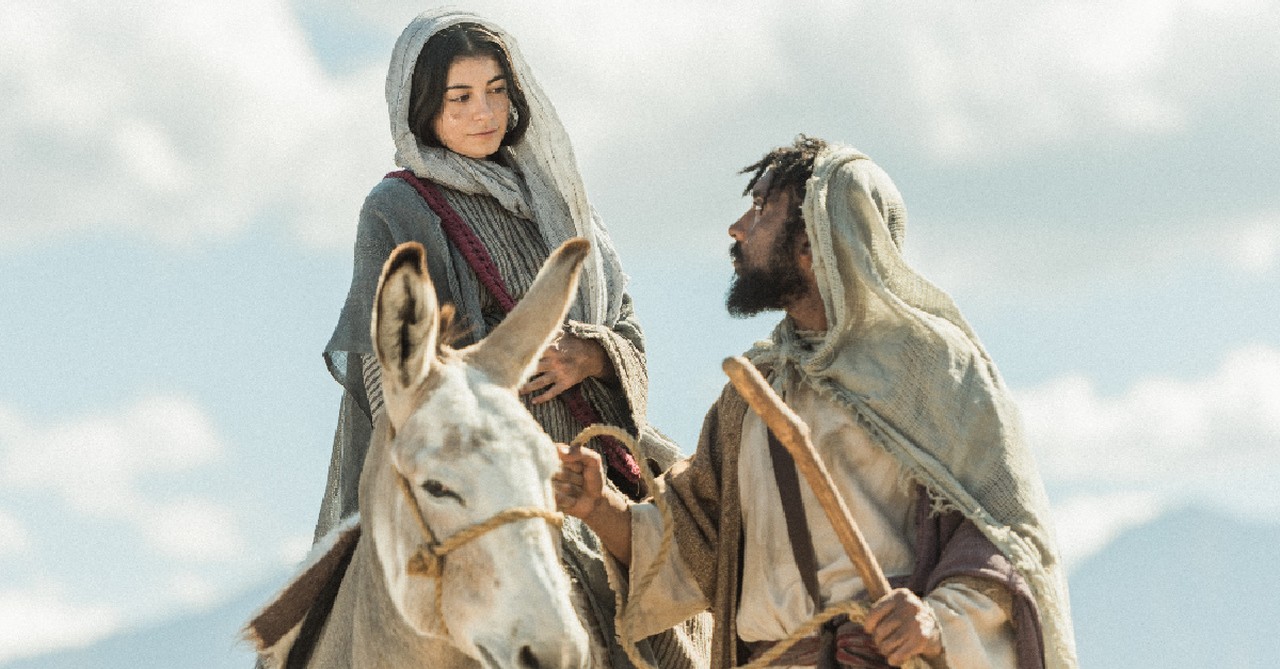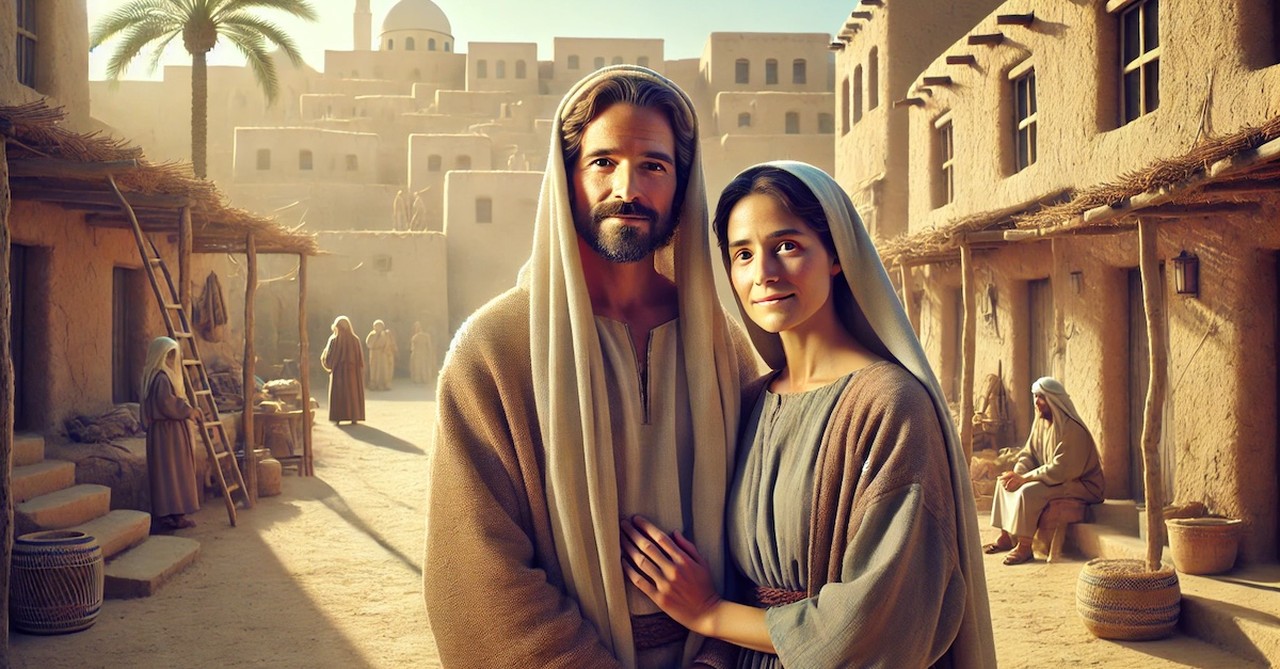3 Biblical Examples of Grateful Couples and What We Can Learn from Them

How can we practice gratefulness as couples? Have you ever stopped to consider that? So often, we view gratefulness as an individual endeavor, and yet, throughout our marriages and relationships, we come into circumstances where we feel immense gratitude or are faced with the struggle of practicing gratitude when we least feel like it.
We’re not alone. We can look at examples of couples who have incorporated gratefulness and learn from them. There are biblical examples of partners whose gratitude can set in motion a new perspective for many of us.
But first, what is gratitude when looked at through a biblical lens? The common definition is an attitude of thankfulness. Gratitude in Scripture takes on an even deeper meaning as it acknowledges the gifts that God has given us, and it honors Him with the glory and thankfulness owed Him in His goodness toward us.
“The Hebrew term for gratitude is hakarat ha’tov, which literally translates to: ‘recognizing the good.’ As we begin to ‘recognize the good,’ even in small ways, it will undoubtedly lead us to noticing the good in other areas of our lives. Gratitude affirms. It has a way of multiplying. As we profess gratitude, the more reasons we will find to be thankful.” – Avital Snow, Firm Israel.
So, taking this concept into our relationship of marriage and oneship, we can begin to see how gratitude not only is shifted toward the Lord in His goodness, but multiplies by continuing to bind the husband and the wife together in a triangular relationship with God at the point.
Let’s look at some biblical examples of couples whose experiences ushered in gratefulness.
Photo credit: ©SWN/Image created using DALL-E AI
1. Zechariah and Elizabeth

1. Zechariah and Elizabeth
SLIDE 1 OF 3
Given the news that Elizabeth would bear a son in her old age, this couple centers their gratitude on God’s blessing. Zechariah composes a song of praise because they saw the prophetic nature of God’s gift to them. As parents and recipients of God’s gift, they recognized that their son John (the Baptist) would become the “prophet of the Most High” and that he would “go on before the Lord to prepare the way for him” (Luke 1:67-79). The examples given to us through this couple is one of stark recognition that God’s gifts aren’t just for ourselves, but also to further His glory.
Zechariah and Elizabeth turned their gratitude upward and outward, and, in essence, returned the gift God had entrusted them with to be used to further God’s kingdom.
Photo credit: ©SWN/Image created using DALL.E 2024 AI technology
2. Joseph and Mary

2. Joseph and Mary
SLIDE 2 OF 3
When you consider who they were entrusted with, one can only imagine the vast array of emotions and thoughts that entered into Joseph and Mary’s relationship. At the point of Mary’s pregnancy, they were merely pledged to one another and had not entered the union of marriage. Still, in accordance with the instructions given to them by God, they moved ahead through His guidance, following what the Lord had prophesied and designed in order to bring His own Son into the world as the unblemished lamb and the looked-for Messiah.
We see later, when the couple takes Jesus to the temple to be consecrated to the Lord, that they offered sacrifices and their worship was a sign of mutual gratitude to the Lord.
"When the time came for the purification rites required by the Law of Moses, Joseph and Mary took him to Jerusalem to present him to the Lord (as it is written in the Law of the Lord, “Every firstborn male is to be consecrated to the Lord”), and to offer a sacrifice in keeping with what is said in the Law of the Lord: “a pair of doves or two young pigeons.” (Luke 2:22-24)
It was a humble and reverent recognition of God’s responsibility bestowed on them to raise the Son of God. It was a submissive gratefulness shown by their act of sacrifice and worship that kept their focus on the glory of God through the working of His gift, Jesus.
Joseph and Mary’s gratefulness was shown by their humble response of obedience and worship. They acknowledged God’s presence in their life and personage in their midst, and consecrated Jesus to the Lord as was instructed them. Obedience is a remarkable form of gratitude. It shows complete submission and acquiescence to a higher authority. As a couple, they entered this obedience with remarkable unity—a great example to follow.
3. Aquila and Priscilla

3. Aquila and Priscilla
SLIDE 3 OF 3
Not much is said about this New Testament couple, and yet the few words dedicated to them show their gratitude for the saving gospel of Christ Jesus through the evidence of their devotion to service.
We see Paul meeting Aquila and Priscilla—Aquila being Jewish and rendered homeless as the Roman government commanded Jews to leave Rome. Displaced, this couple could have abandoned their faith, or even each other. While the circumstance of their story is left to the mystery of untold details, we see them giving Paul respite in his ministry and finding commonality with him due to their mutual trade of tent making.
It is later in Acts chapter 18 that we find Aquila and Priscilla uprooting once again to travel to Ephesus with Paul. Then, in verse 24, we’re introduced to yet another player in the ministry of the early church, a Jew named Apollos who began to teach boldly.
Acts states: “But when Priscilla and Aquila heard him, they took him aside and explained to him the way of God more accurately.” (Acts 18:26)
While these can, at first glance, appear to be standard ministry practices and general acts of service for the Lord and the spreading of His gospel, what Aquila and Priscilla do in this brief mention of their lives shows the devotion of their faith. The depth of gratitude for what God had gifted them with in the form of their salvation was reflected in their dedication to be mobile, to travel, to share with Paul in his mission, and to help raise up and mentor new missionaries in order to see the gospel spread.
Aquila and Priscilla show their gratitude through their devotion. This devotion encapsulated and steered their entire life, their decisions, and how they communicated with others.
Gratitude should not be underestimated by couples. It becomes a fuel for effective worship, for sincere obedience, and for immeasurable devotion. With that comes a oneness of mind that is unlike anything else that binds—aside from love. Gratitude is actionable. It spurs into motion and helps couples define the why behind their choices and their decisions. It pillows a relationship with softness of spirit, a humility of heart, and a deep realization of the undeserved grace given to them.
Creating a focus on gratitude within a marriage and partnership is so critical to being bound equally to one another. There are few motivations more powerful than gratefulness, and when shared by those bound together by sacred promise, it becomes a foundation to stand on that can be used mightily by the One to whom the gratefulness is given to.
Gratefulness is more than just being thankful. Gratefulness is a way of life. It is a decision of devotion, of obedience, and of worship. It is an active recognition of the goodness of God.
Photo credit: ©SWN/Image created using dalle AI
Jaime Jo Wright is an ECPA and Publisher’s Weekly bestselling author. Her novel “The House on Foster Hill” won the prestigious Christy Award and she continues to publish Gothic thrillers for the inspirational market. Jaime Jo resides in the woods of Wisconsin, lives in dreamland, exists in reality, and invites you to join her adventures at jaimewrightbooks.com and at her podcast madlitmusings.com where she discusses the deeper issues of story and faith with fellow authors.
Originally published November 08, 2024.









